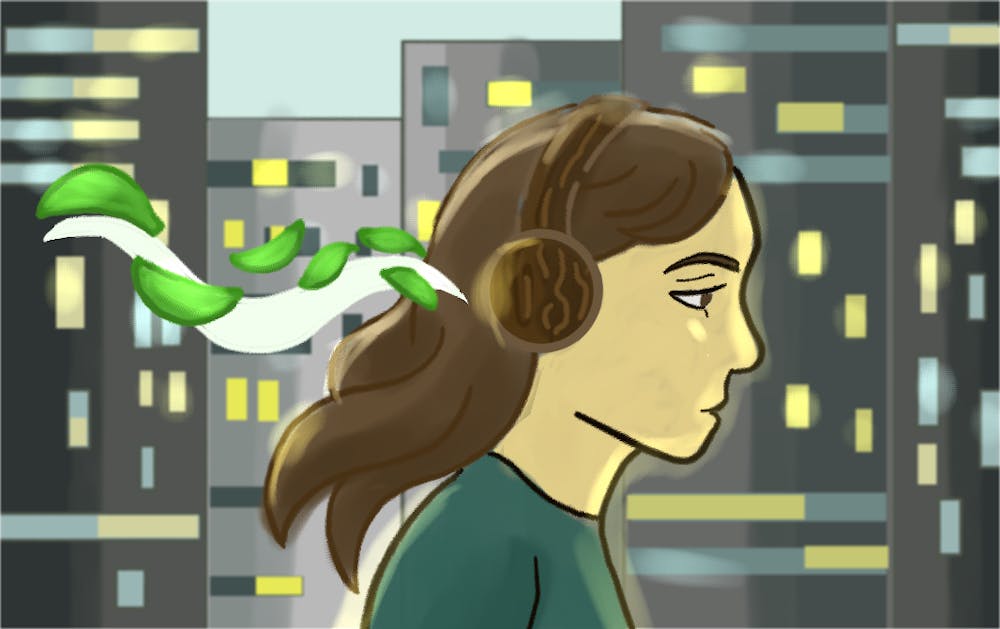Class for four hours. Work for six. Homework for three. Sleep for seven. Busy everyday routines can feel overwhelming, and with so little free time, who has a spare minute to stop and smell the roses?
“In the age of fast-paced lifestyles and multitasking, paying attention to one’s environment has often taken a backseat,” said Sabine Feisst, associate director of the Listen(n) Project and ASU musicology professor. “Listening is an immensely enriching, gratifying and centering activity that helps us become connected to a place.”
Since 2013, The Listen(n) Project has both visually and audibly recorded environments to track indications of climate change. Through the use of virtual reality, they can display a 360-degree image to participants, complete with sound from their recordings.
Additionally, they host listening and field recording workshops and “soundwalks” led by Feisst.
READ MORE: Learning to listen: Tempe ‘soundwalks’ connect students with nature
“I think we tend to forget that we also live in those ecosystems with these other animal and plant species and that we share in that experience,” said Daniel Gilfillan, project collaborator and ASU German studies associate professor.
“When we hear the sounds of animals, the play of the wind against a rock formation and the dusty abundance of the desert atmosphere,” he said, “I believe we begin to think more critically about how intertwined our lives are with the ecosystems we live in and with the other inhabitants of our planet.”
Stopping to listen to the world around us can be quite a challenge, and as Gilfillan said, “We can easily travel to a natural area to find places where this noise is lessened but is never completely gone.”
Even when listening to nature, man-made sound will never be completely absent.
In quiet suburbs, I can still hear the echo of music, a police siren in the distance or the starting up of a car engine. While it may seem impossible to ever fully experience silence, making time to listen to the environment can be a grounding experience.
Garth Paine, director of The Listen(n) Project and associate professor in the School of Arts Media and Engineering, started the project based on a childhood memory.
“Rather than watching television at night, I would often just go outside and lay in the grass and look at the stars and just listen and feel the nature around me,” said Paine.
As he got older, he found himself doing the same things he did when he was a child during his time field recording. Laying down in the cool grass at 3 a.m., he would be still and record.
Sounds can help us to relax and have a feeling of clarity and focus — sounds of insects buzzing, birds chirping, the dry crackle of the sun on the dirt, pitter-patters of a rainstorm.
“When I listen to the earth in field trips, soundwalks and in listening exercises, I become calm, relaxed, centered and enlightened,” Feisst said. “It can be very elevating and fun, yielding really wonderful discoveries.”
Other than educating others on the importance of both listening to the environment and noticing the alarming changes in climate, Listen(n) also focuses on sustainability. Discovering how large humankind’s sonic footprint is can help them understand what lifestyle changes need to be done.
“The climate crisis is a global crisis. It’s really all of our behaviors that have led us to this position, and so we all need to reassess those behaviors and ask ourselves, ‘What can I change?’” said Paine.
Making a difference and getting involved in climate change can seem difficult when problems like the permafrost melting in the Arctic are so large and far away.
Rather, Paine said, focusing on fixing things on a local scale and hearing to the environment speak are the first steps — and listening is one of them.
Reach the reporter at swindom@asu.edu and follow @SaraWindom on Twitter.
Like The State Press on Facebook and follow @statepress on Twitter.




